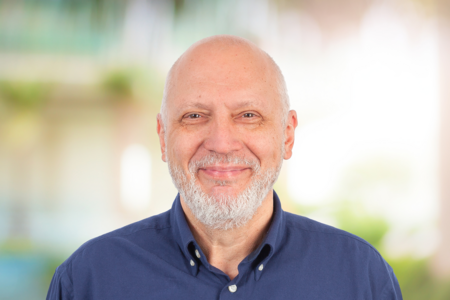Opening Genebanks’ Doors to Farmers

28 September 2016
Sure, they’ve had a helping hand from scientific plant breeders over the past century or so, but it was farmers who generated and nurtured the bulk of the diversity we find in crops today, over the course of 99% of the history of agriculture. Is it now slipping through their fingers?
Pat Mooney believes so. A recipient of the Right Livelihood Award (the “Alternative Nobel Prize”) in 1985, and with over 40 years of experience in this field, his opinions matter. He visited us at the Crop Trust a few months back, and told us he was worried that the current wave of consolidation in the seed industry – among other things, though most urgently – was taking diversity out of farmers’ hands. Where can they turn, increasingly, except to genebanks?
Alas, genebanks do not seem to be ready for them. Their doors are largely closed to developing country farmers, according to Pat. Even when farmers know where the doors are, the doorkeepers they encounter speak a different language, literally as well as figuratively.
Pat has now put those concerns in writing in a chapter (p. 97) in the Global Alliance for the Future of Food’s just-published report, The Future of Food: Seeds of Resilience, A Compendium of Perspectives on Agricultural Agrobiodiversity from Around the World. He makes a number of thoughtful recommendations for facilitating farmers’ access to the seeds in genebanks. Some are aimed at the Global Alliance for the Future of Food itself, some at the Seed Treaty, and some at us at the Crop Trust.
One of these is that someone “should undertake a formal survey of major national and international gene banks to ascertain their current practices with regard to facilitating farmer access to their collections.”
We think that’s a great idea. Actually, we thought it was a great idea when Pat suggested it to us during his visit, and have been trying to make it happen ever since. Now, thanks to some support from the Norwegian government, it looks like it will.
Ola Westengen is Associate Professor in Agricultural Development at the department of International Environment and Development Studies of the Norwegian University of Life Sciences. His research focuses on “agrobiodiversity as it relates to conservation and use of genetic resources, seed supply systems, livelihoods in the global south, food security and adaptation to climate change, crop evolution and crop diversity as biocultural heritage.”
Ola has put together a survey as part of a wider study he’s doing on the linkages between public genebanks and farmers. In particular, he aims to compile data on the direct use by farmers, and by organizations working with farmers, of genetic resources conserved ex situ. The purpose of the study is to map different approaches to facilitate farmers’ access to genetic resources and to draw lessons for future development initiatives to connect ex situ conservation with sustainable use of genetic resources on farm.
If you’re involved with a genebank, you can take the survey here. But even if you don’t, please spread the word. Now more than ever, farmers need the options genebanks can give them. Let’s see how we can make sure they are able to get their hands on as much diversity as they want.
The opinions expressed here are those of the authors and do not necessarily reflect the opinions or views of the Crop Trust. The Crop Trust is committed to publishing a diversity of opinions on crop diversity conservation and use.

